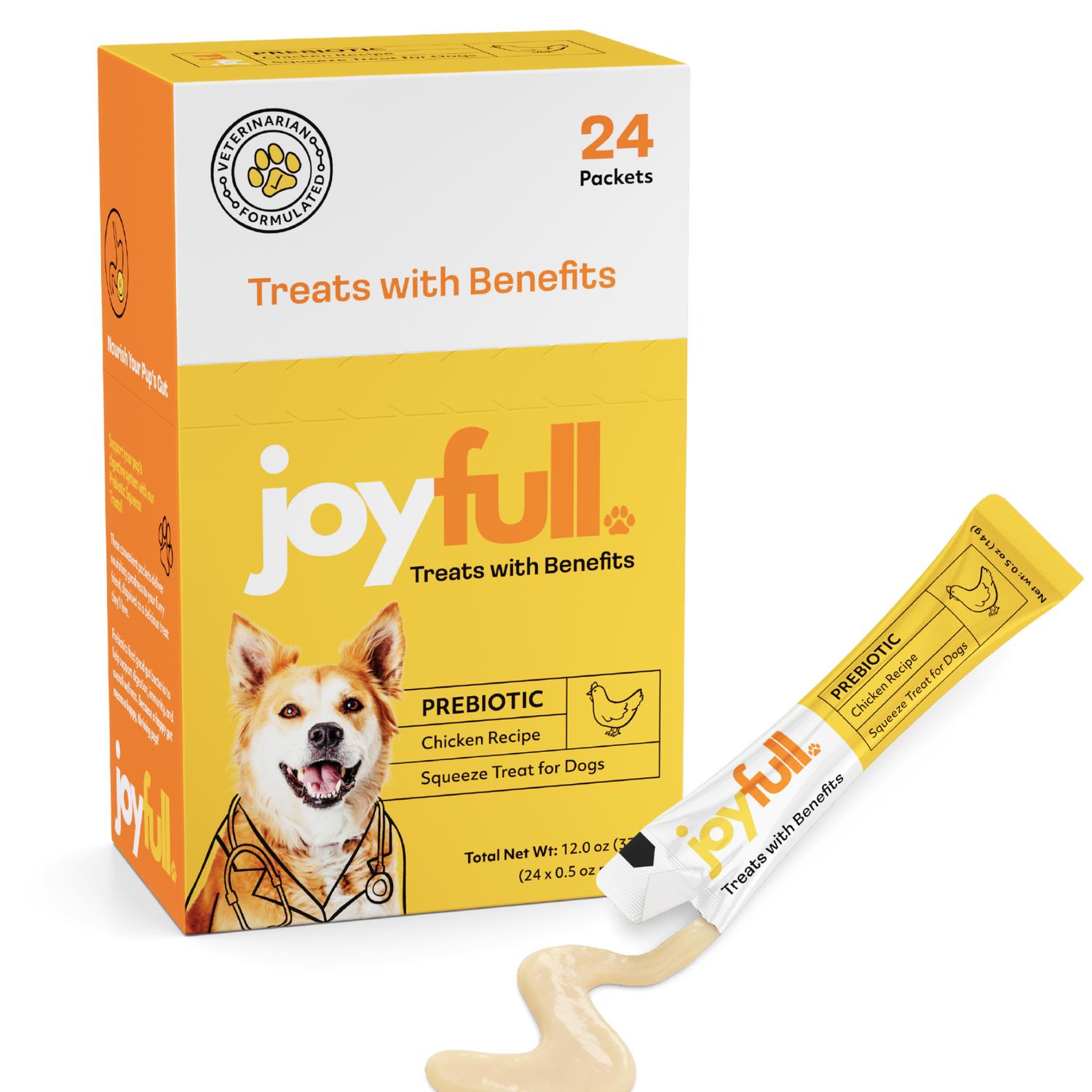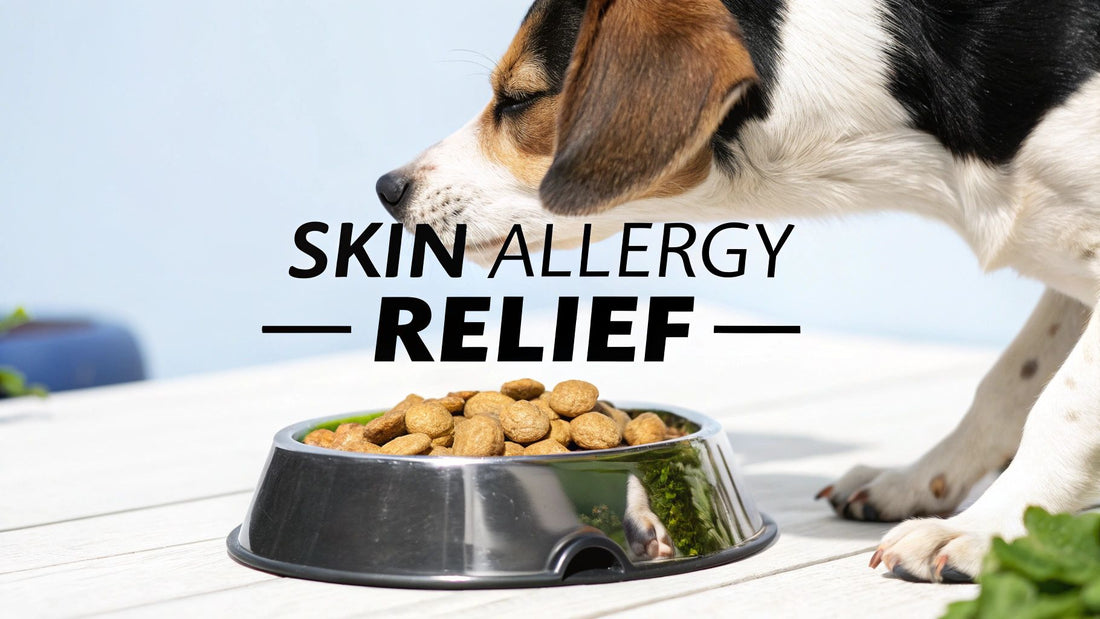
Best Dog Food for Skin Allergies and Itchy Skin
If your dog is dealing with the misery of skin allergies, you've probably realized that the solution often lies in their food bowl. The best place to start is usually with a limited-ingredient diet (LID), a novel protein diet (think duck or venison), or a hydrolyzed protein formula. These diets are specifically designed to sidestep common troublemakers like chicken and beef, which are frequently the real culprits behind that relentless scratching and licking. Making this switch is often the first, most crucial step toward bringing them lasting relief.
Why Your Dog Can't Stop Scratching
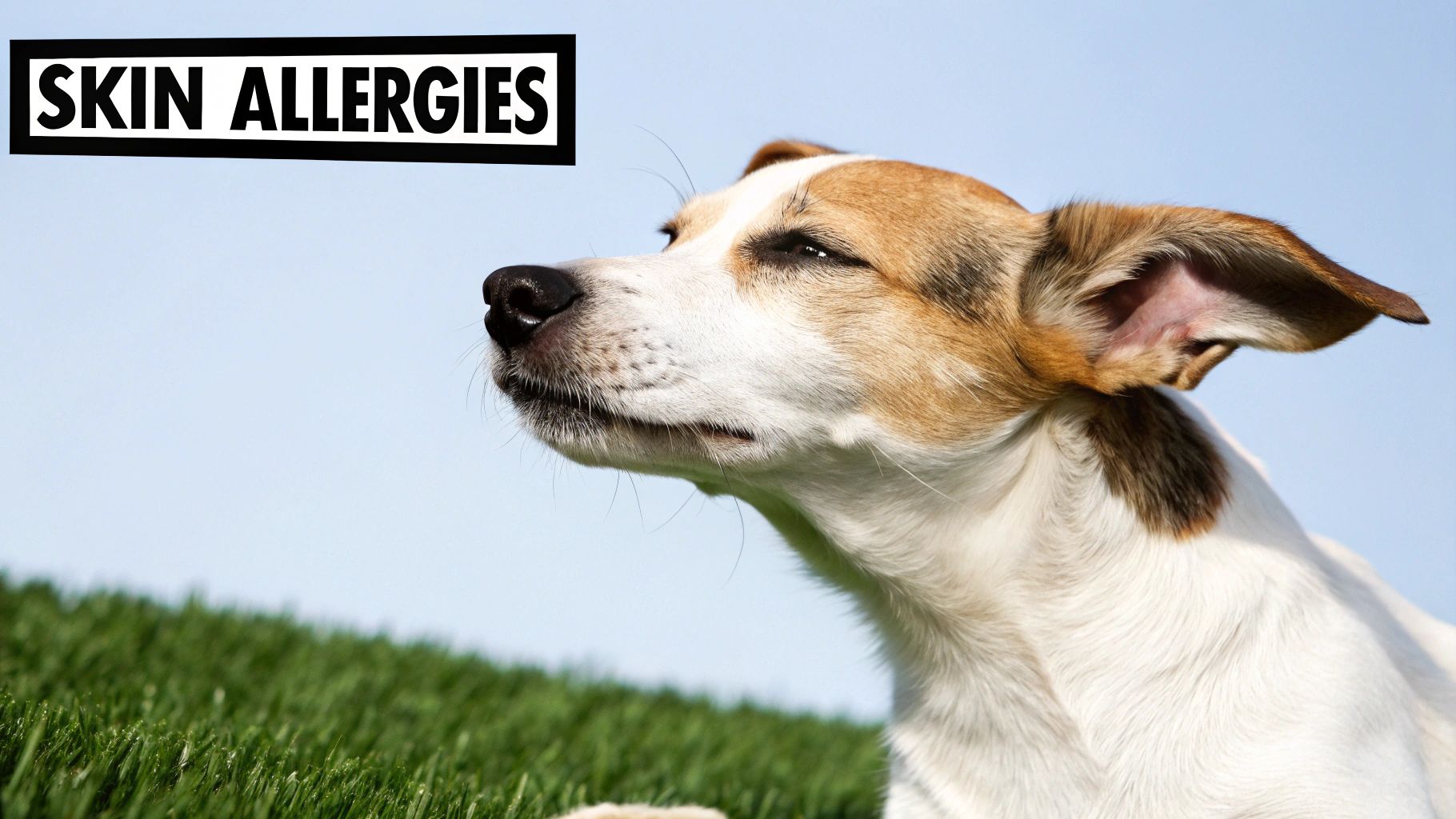
That constant jingle of a dog tag in the dead of night, the endless sound of slurping and licking, the raw, red skin—these aren't just minor quirks. They are loud and clear signals that your best friend is truly uncomfortable. These are the classic signs of skin allergies, a condition where your dog’s own immune system turns on them.
Understanding the Allergic Reaction
Imagine your dog's immune system as a hyper-vigilant security guard. Its main job is to spot and take down real threats, like viruses or bad bacteria. But in a dog with a food allergy, this system gets its wires crossed. It mistakenly flags a perfectly harmless protein from their food—often from everyday ingredients like beef or chicken—as a dangerous invader.
Once this case of "mistaken identity" happens, the immune system launches a full-scale assault. It floods the body with inflammatory chemicals like histamines, which are meant to fight off pathogens but instead trigger the all-too-familiar symptoms of an allergy.
The result is an internal war that shows up on the outside as:
- Intense, non-stop itching and scratching
- Red, inflamed skin, rashes, or hives
- Recurring ear infections
- Painful raw patches of skin called hot spots
- Obsessive paw licking and chewing
This isn't just a bad habit your dog needs to break; it's a physiological reaction to constant internal irritation. Getting to the root of the problem—the food—is the most powerful way to quiet this internal chaos and give your dog their comfort back.
Allergy vs. Intolerance: What's the Difference?
It’s easy to confuse a true food allergy with a food intolerance, but they aren't the same thing. They might look similar on the surface, but they involve completely different systems in the body.
- Food Allergy: This is an immune system response. It's what triggers that widespread inflammation, leading primarily to skin problems like itching, hives, and chronic infections.
- Food Intolerance: This is a digestive issue. The immune system isn't involved at all. It simply means your dog’s gut can't properly break down a certain ingredient, leading to issues like gas, bloating, or diarrhea.
While both are unpleasant for your pup, those frustrating skin-related problems are the true hallmark of a food allergy. This is precisely why a dietary change focusing on the best dog food for skin allergies can make such a dramatic difference.
The Most Common Food Culprits
Technically, any food ingredient could trigger an allergic reaction, but years of veterinary experience and research have shown us that a few usual suspects are responsible for most cases. These are ingredients that have become incredibly common in commercial dog foods, and just like with people, overexposure to one thing can make the body more likely to develop a sensitivity to it.
The most frequently identified food allergens in dogs are:
- Beef
- Dairy Products
- Chicken
- Wheat
- Soy
It's estimated that roughly 10% of all dogs suffer from food allergies that manifest as skin problems. This is why you see so many vets recommending hypoallergenic dog foods with hydrolyzed or novel proteins—they're formulated to avoid these common triggers and calm the allergic response. If you're interested, you can explore more about the rise of these specialized diets and the positive impact they have on canine health.
By understanding what’s really going on under all that fur, you can finally move from just treating the symptoms to providing a real, long-term solution. Changing your dog’s food is one of the most direct and effective things you can do to end their discomfort and bring the joy back into their life.
The Best Ingredients for Calming Your Dog's Skin
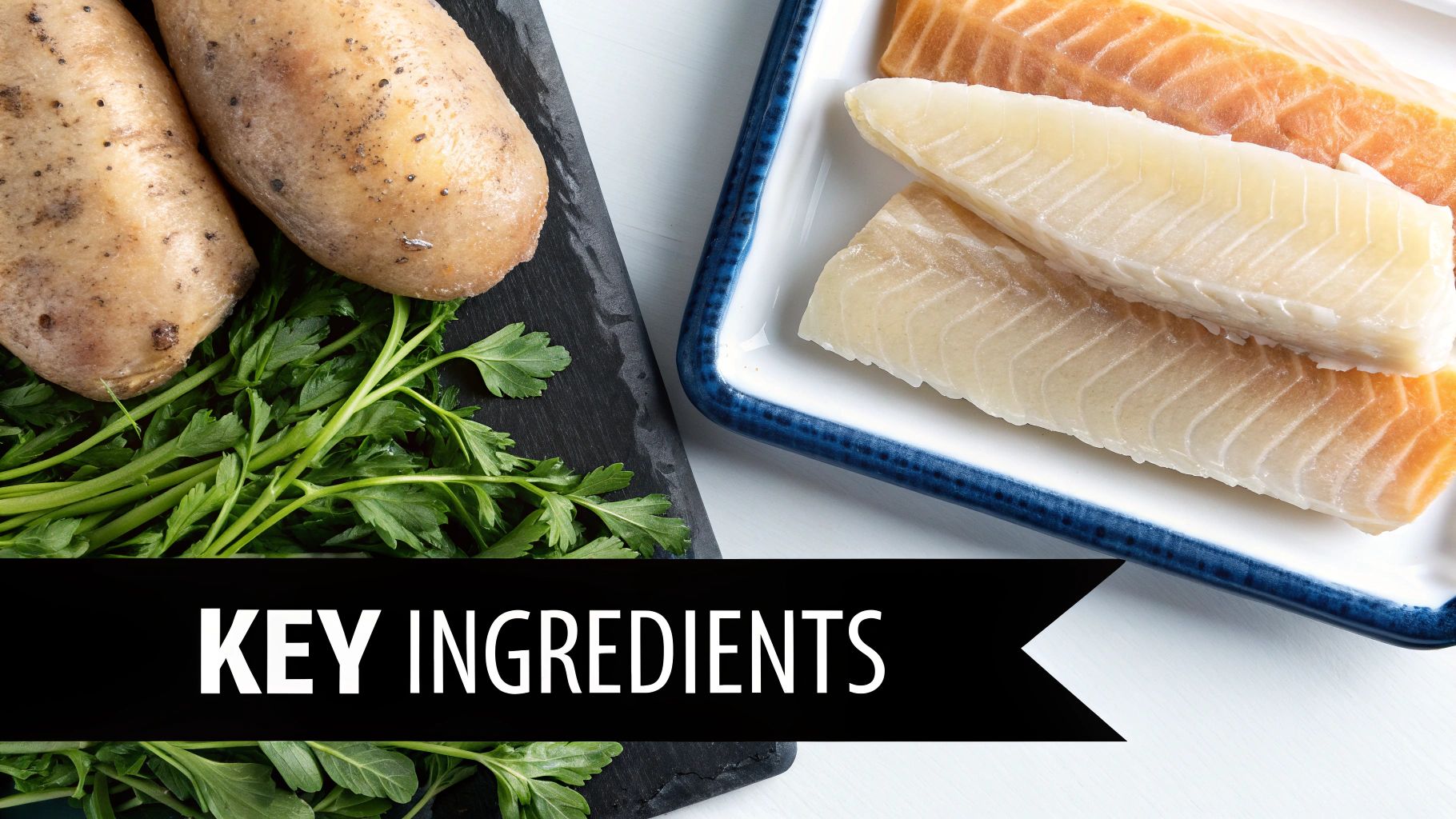
When you're trying to pick the best dog food for skin allergies, it can feel like you need a Ph.D. in canine nutrition. But honestly, it all comes down to a few key ideas. The mission is simple: find ingredients that soothe the skin while sidestepping the ones that send your dog's immune system into overdrive.
Think of it as rebuilding your dog’s skin health from the inside out. At the heart of this approach are two game-changing concepts: novel proteins and hydrolyzed proteins. Both are designed to outsmart your dog's overeager immune system, just in slightly different ways.
The Power of Novel and Hydrolyzed Proteins
A novel protein is exactly what it sounds like—a protein source that's new to your dog. If your furry friend has been eating chicken and beef his whole life, his immune system knows those proteins intimately. Switching to something he’s never encountered, like duck, kangaroo, or even venison, can halt the allergic reaction cold.
It’s like a lock and key. The immune system has a specific "key" for common proteins like chicken, and when it finds it, it unlocks an allergic flare-up. A novel protein is a brand-new lock. The old key just won't fit, so the reaction never gets triggered.
Hydrolyzed protein diets use a different, but just as clever, tactic. These formulas, which you'll typically get through your vet, take common proteins and use water to break them down into incredibly tiny fragments. They become so small that the immune system doesn't even recognize them as a threat. The protein is essentially rendered invisible, so the body's security alarm never goes off.
Strengthening the Skin Barrier with Omega Fatty Acids
Beyond just the protein, the right kinds of fats are crucial for calming down irritated skin. Omega-3 and Omega-6 fatty acids are the real heavy hitters here. If you picture your dog’s skin cells as bricks forming a wall, these omega fatty acids are the mortar holding everything tightly together.
A strong, well-mortared skin barrier accomplishes two critical jobs:
- It locks moisture in, preventing the dry, flaky skin that fuels the constant scratching.
- It keeps allergens out, forming a shield against environmental triggers like pollen, dust, and mold.
Foods that are packed with fish oil (from salmon or sardines), flaxseed, or other sources of these healthy fats can dramatically reinforce this protective barrier. The result is skin that's less reactive and heals more effectively.
A strong skin barrier is your dog's first line of defense. Diets fortified with omega fatty acids help repair this barrier, making the skin more resilient against both internal and external allergy triggers.
Choosing Smarter Carbohydrates
While proteins get most of the blame for food allergies, the carbs in your dog’s bowl matter, too. A lot of traditional kibbles rely on fillers like corn, wheat, and soy. These aren't inherently bad, but for a dog with sensitivities, they can sometimes contribute to inflammation.
That's why you'll see many of the best dog food formulas for skin allergies using easily digestible, nutrient-rich carbohydrates instead. These alternatives provide steady energy without the added risk of irritation.
Great carbohydrate alternatives include:
- Sweet potatoes
- Peas
- Pumpkin
- Lentils
This shift toward targeted, high-quality ingredients is making a huge impact. In fact, the market for dog allergy treatments, which includes these specialized diets, was valued at USD 1.47 billion in 2024 and is projected to hit USD 3 billion by 2035. It's clear proof of how many owners are turning to nutrition for answers. You can read more about the trends in the dog allergy treatment market to see just how big this movement is. By becoming an informed pet parent, you can confidently choose a food that finally calms the itch and brings your dog some much-needed relief.
How to Read Dog Food Labels for Allergy Clues
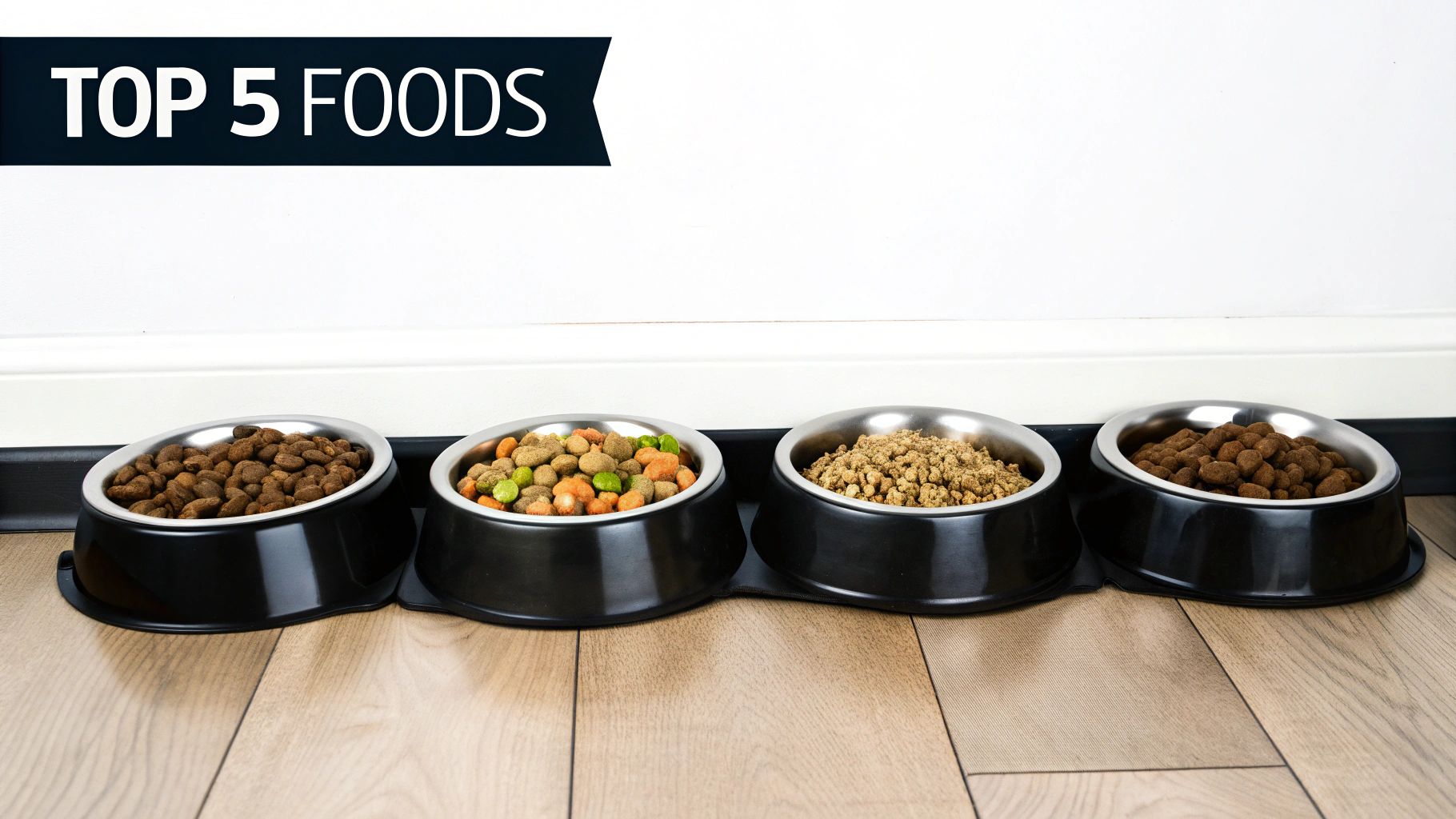
Walking down the pet food aisle can be dizzying. The bags are covered with pictures of happy, healthy dogs and tempting words like "natural," "holistic," and "premium." But when you're on the hunt for food that will help your dog's itchy skin, you have to put on your detective hat. It's time to look past the fancy marketing and zero in on the only thing that truly matters: the ingredient list.
That small block of text on the back of the bag is your treasure map. Learning to read it is the most powerful tool you have for managing your dog's skin allergies. It puts you in the driver's seat, allowing you to make choices based on facts, not just flashy packaging.
Cracking the Code of the Ingredient List
The first rule of thumb is simple: ingredients are listed by weight, from heaviest to lightest, before cooking. This means the first few items on the list make up the bulk of what’s in the bag. So, when you're looking for an allergy-friendly food, the top of that list is where your investigation begins.
What you want to see is a high-quality, single-source protein right at the top. For a dog with known sensitivities, this might be a "novel" protein like duck or venison. Seeing a clear, specific protein source is an excellent start.
On the flip side, vague terms are a huge red flag. If you see phrases like "meat by-products" or "poultry meal" near the top, be wary. These terms are deliberately non-specific and could contain a mix of different animals, making it impossible to know if a hidden allergen like chicken is part of the recipe.
Problem Ingredients to Watch Out For
As you scan the label, keep an eye out for common culprits and unnecessary junk that can fuel inflammation and irritation. Spotting these ingredients can save your dog weeks of discomfort.
Potential Problem Ingredients:
- Vague Protein Sources: Terms like "meat meal" or "animal fat" are ambiguous. You have no way of knowing their origin, which is a gamble you can't afford with a sensitive dog.
- Common Allergens: If you suspect an allergy, look for the usual suspects: beef, chicken, dairy, wheat, corn, and soy. They can be sneaky and pop up anywhere on the list.
- Artificial Additives: Artificial colors (like Red 40), flavors, and chemical preservatives (such as BHA, BHT, or ethoxyquin) offer zero nutritional value and can trigger reactions in sensitive pets.
Remember, a shorter, more recognizable ingredient list is often a blessing for a dog with skin allergies. If you can't pronounce half the ingredients, it’s a sign the food might be overly processed and not the best choice for a delicate system.
Choosing the right ingredients means knowing what to avoid just as much as what to include. Here's a quick comparison to help you spot the good guys and steer clear of the bad ones.
Common Allergens vs. Allergy-Friendly Alternatives
| Ingredient Category | Common Allergen to Avoid | Better Alternative for Sensitive Dogs |
|---|---|---|
| Protein | Chicken, Beef, Dairy | Duck, Lamb, Salmon, Venison, Rabbit |
| Carbohydrate | Corn, Wheat, Soy | Sweet Potatoes, Peas, Oats, Brown Rice |
| Fat | "Animal Fat" (unspecified) | Salmon Oil, Sunflower Oil, Flaxseed Oil |
| Preservatives | BHA, BHT, Ethoxyquin | Mixed Tocopherols (Vitamin E), Rosemary Extract |
This table isn't exhaustive, but it gives you a solid framework for evaluating a food's potential to either calm or trigger your dog's skin.
Understanding Key Label Lingo
The pet food industry loves its buzzwords, and they can be pretty confusing. Getting a handle on what these terms actually mean will help you cut through the marketing noise.
-
Limited Ingredient Diet (LID): These formulas are built around a single animal protein and a handful of other ingredients. The goal is simple: reduce the number of potential triggers. You'll want to see a clear protein like "Salmon" followed by easily digestible carbs like sweet potatoes or peas.
-
Grain-Free: This just means the food doesn't contain common grains like corn, wheat, or soy. It's only helpful if your dog has a confirmed grain sensitivity. Make sure the grains aren't just replaced with a mountain of starchy fillers like potatoes.
-
Novel Protein: This term refers to a protein source your dog has likely never eaten before, such as bison, kangaroo, or duck. The idea is to use something so new to their system that an allergic response is highly unlikely.
If you're ready to go from a confused shopper to a confident advocate for your dog's health, taking a deeper dive into how to read dog food labels is your next step. This knowledge is truly empowering.
Choosing the Right Type of Allergy Dog Food
Once you’ve decided to tackle your dog’s endless scratching through their diet, you have to figure out your game plan. Diving into the world of allergy-friendly dog food can feel like learning a new language, with terms like "hydrolyzed," "novel," and "LID" getting tossed around. But don't worry—getting a handle on these concepts is the key to finding the right food for your pup.
Not all allergy foods are built the same. Each type takes a slightly different path to calm down your dog's overactive immune system. Think of it like having a toolbox for a specific job. You wouldn’t use a sledgehammer to hang a picture frame, right? The best dog food for skin allergies depends entirely on your dog’s unique situation. The three main options you'll come across are Prescription Diets, Limited Ingredient Diets (LID), and Novel Protein Diets.
Prescription Diets: The Gold Standard for Diagnosis
When allergies are really bad or the trigger is a complete mystery, vets often start with a prescription therapeutic diet. The most common kind is a hydrolyzed protein diet.
In these special formulas, a common protein source like chicken or soy is molecularly broken down into such tiny pieces that the immune system doesn't even recognize it as a threat. It’s like taking a "WANTED" poster and shredding it into confetti; the security guards (your dog's immune cells) simply can't identify the target anymore.
These diets are incredibly effective for a strict elimination trial to confirm a food allergy. They provide a "clean slate" to see if food is truly the problem. The downside? They’re usually more expensive and require a vet’s prescription, making them a fantastic diagnostic tool but not always a forever food for every dog.
Limited Ingredient Diets: For Long-Term Management
After you've pinpointed what your dog is reacting to, a Limited Ingredient Diet (LID) is often the perfect long-term solution. The thinking behind an LID is beautifully simple: fewer ingredients mean fewer potential triggers. These foods are usually built around a single animal protein and just a handful of gentle, easy-to-digest carbohydrates.
For instance, a common LID might feature duck as the only protein and sweet potatoes as the main carb source, without a bunch of extra fillers. This minimalist approach makes it much easier to avoid known allergens and keep your dog's system calm. For more on this, you can check out our guide on what to look for in dog food, which really dives into the benefits of clean, simple recipes.
Novel Protein Diets: Introducing Something New
A Novel Protein Diet works on the simple principle of newness. A "novel" protein is just one your dog has likely never eaten before. If your dog has spent its whole life eating foods based on chicken and beef, its immune system has had plenty of opportunities to develop a sensitivity.
Switching to something completely different—like venison, rabbit, or even kangaroo—can stop the allergic reaction in its tracks. The strategy works because the immune system hasn't learned to flag these new proteins as enemies yet. It’s like changing the password on an account that keeps getting hacked. The old tricks no longer work.
This is a huge reason why the global hypoallergenic dog food market, valued at USD 15.6 billion in 2024, is on track to blow past USD 25 billion by 2035. Pet owners are realizing that what's familiar isn't always what's best.
Choosing Your Approach: A Quick Comparison
- Prescription Diet: Best for severe allergies and for diagnosing the problem with your vet.
- Limited Ingredient Diet (LID): Ideal for everyday feeding once you know which ingredients to steer clear of.
- Novel Protein Diet: A great first move when you suspect a common protein allergy but haven't nailed down the exact one.
At the end of the day, the best dog food for skin allergies is the one that brings your dog relief. By understanding these different dietary strategies, you can work with your vet to make an informed choice that gets your best friend back on the path to a happy, itch-free life.
Working With Your Vet to Run an Elimination Diet
When you suspect your dog’s food is the source of all that itching and misery, it’s easy to feel lost. The most reliable way to get answers isn't a complicated test, but a carefully controlled process called an elimination diet. This is the gold standard for vets trying to pinpoint exactly which ingredient is causing the problem.
Think of it like a science experiment where your dog is the most important subject. The idea is to strip the diet down to its simplest form, let their body calm down, and then methodically reintroduce old foods one by one to see which one makes the itching start again. It takes a lot of patience, but the payoff is finally knowing what the real enemy is.
But this isn't a DIY project. It is absolutely critical to work with your veterinarian through the entire process. They’ll help you select the right food for the trial—often a prescription diet with hydrolyzed proteins or a single novel protein—and make sure your dog stays healthy and gets all the nutrients they need. Your vet is your co-pilot here, guiding you to a safe and successful conclusion.
The Elimination Phase: Hitting the Reset Button
This first stage is the most important, and the strictest. For 8 to 12 weeks, you'll feed your dog only the new, prescribed food. Nothing else can pass their lips.
That means a complete stop to:
- Treats (unless they’re made from the exact same ingredients as the new food)
- Dental chews and rawhides
- Table scraps or that "oops, I dropped it" piece of cheese
- Flavored medications or supplements
I know this is the hardest part for us as owners, but consistency is everything. A single bite of an old treat can completely derail your progress and force you to start the clock all over again. During this phase, you're giving your dog's immune system a much-needed break, which allows the inflammation to go down and the skin to finally start healing.
An elimination diet is a diagnostic tool, not a forever diet. The strict 8-12 week period is designed to clear your dog's system of potential allergens, giving you a clean slate to test against.
The Reintroduction Phase: Playing Detective
So, after 8 to 12 weeks, your dog’s symptoms are gone or much better. Great! You can be pretty confident a food allergy was the culprit. Now, the real detective work begins. This is called the reintroduction phase, or the "challenge."
With your vet's guidance, you'll start adding single ingredients from your dog's old diet back in, one at a time. For example, you might mix a small amount of chicken into their meals for a week or two, while keeping everything else the same.
Did the itching, red skin, or ear infections come roaring back? You’ve found a trigger. If nothing happens, you can likely cross that ingredient off the list and move on to the next one, like beef or wheat, after a short "cool-down" period. This slow, methodical approach is the only way to build a definitive list of what's safe for your dog and what you need to avoid for good.
As you start this journey, remember that even switching to the new hypoallergenic food needs to be done slowly to avoid an upset stomach. This graphic lays out the best way to introduce any new food.

This gradual mix-in over 7-10 days gives your dog's gut time to adjust, which minimizes the risk of digestive issues. Once the elimination diet is over and you've identified the trigger, you'll have the knowledge to confidently choose the best food for your dog's skin allergies, setting them up for a much happier, itch-free life.
Common Questions About Dog Food for Skin Allergies
Even with the best information, diving into the world of canine nutrition can feel overwhelming. When you're trying to pin down the best dog food for your dog's skin allergies, you want to feel confident you're making the right call. Let's walk through some of the most common questions that pop up for pet parents, so you can move forward with clarity.
How Long Until I See an Improvement?
This is usually the very first question on every pet owner's mind, and for good reason. When you switch to a new, allergy-friendly diet, you really need to stick with it exclusively for at least 8 to 12 weeks to see the full picture.
You might spot some small wins early on—maybe a little less scratching or redness within a few weeks—but true healing doesn't happen overnight. It takes time for the old, problematic ingredients to fully work their way out of your dog’s system and for their inflamed skin to calm down and repair itself.
Remember, consistency is everything here. Just one treat or a sneaky table scrap with the wrong ingredient can hit the reset button on your progress. Sticking to the new diet without exception is the only way to know if it's truly working.
Is Grain-Free Always the Best Option for Allergies?
Not necessarily. "Grain-free" became a huge marketing buzzword, but it's not a cure-all for every dog with skin issues. While some dogs are definitely sensitive to grains like wheat or corn, proteins are actually the far more common culprits.
In reality, studies consistently point to proteins like beef and chicken as the cause of a much larger percentage of food allergies compared to grains. A grain-free food only helps if your dog's specific trigger was a grain. For most dogs, a more targeted strategy, like a novel protein or a limited ingredient diet, is a much more direct and effective path to relief.
Key Takeaway: Don't get tunnel vision on "grain-free." The real goal is to identify the specific ingredient causing the problem—whether it's a protein or something else—to find the diet that will actually make a difference for your dog.
What Is the Difference Between a Food Allergy and an Intolerance?
People often use these terms as if they mean the same thing, but they describe two totally different reactions in your dog's body. Getting this right is key to understanding what's really going on.
-
Food Allergy: This is a full-blown immune system response. The body wrongly flags a food protein as a dangerous invader and launches an inflammatory attack. This is what leads to those classic allergy symptoms: intense itching, hives, chronic ear infections, and angry, red skin.
-
Food Intolerance: This is purely a digestive issue. The immune system isn't involved at all. It just means your dog’s gut has a hard time processing a certain ingredient, which results in things like gas, bloating, or diarrhea.
Here’s a simple way to think about it: an allergy is like the body's security system blaring a five-alarm fire bell, while an intolerance is more like a localized plumbing problem. Both are unpleasant, but those persistent skin problems are the hallmark of a true food allergy.
Can My Dog Develop an Allergy to a Food They Have Eaten for Years?
Yes, absolutely. This happens all the time and often catches pet owners completely by surprise. An allergy can pop up at any stage of a dog's life, even to a food they’ve been eating for years without any trouble.
What often happens is that the constant, long-term exposure to the same protein—like the chicken or beef found in so many standard dog foods—can eventually push the immune system too far, causing it to become sensitized and trigger an allergic reaction. This is precisely why switching to a novel protein your dog has never had before can be so effective.
This growing understanding has started to reshape the pet food industry. In North America and Europe, many pet owners are now willing to spend 20-30% more on specialized nutrition to give their pets a better quality of life. You can learn more about trends in hypoallergenic pet food and see how this consumer demand is driving innovation.
It's also important to remember that while diet is a massive piece of the puzzle, other health issues can add to your dog's discomfort. For example, if your dog is also struggling with joint pain, finding the right support is critical. We put together a guide on dog treats for arthritis that might offer some additional relief for your best friend.
At Joyfull, we believe that a healthful life isn’t just for humans. That’s why our formulas are created with clean ingredients and high-quality proteins to provide genuinely beneficial nutrition for your pet. Explore our products at https://joyfullpet.com to find a better-for-you option your best friend deserves.
